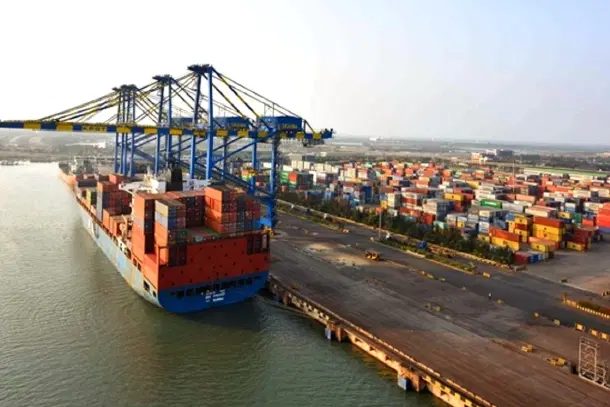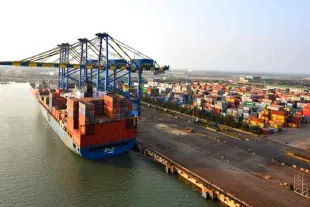Infrastructure
Paradip Port Surpasses Deendayal Port, To Claim Top Spot In Cargo Handling Among State-Owned Ports
V Bhagya Subhashini
Oct 06, 2023, 03:24 PM | Updated 03:39 PM IST
Save & read from anywhere!
Bookmark stories for easy access on any device or the Swarajya app.


During the first half of the current fiscal year, Paradip Port in Odisha has emerged as the leading state-owned port in cargo handling.
The port surpassed Deendayal Port Authority in Kandla, Gujarat, responsible for a public port.
This happened even though they faced challenges due to a train accident in Balasore in June, which affected their railcar supply.
Paradip Port successfully managed 69.147 million tonnes (MT) of cargo from April to September, marking an impressive 8.5 per cent increase, compared to the 63.729 MT handled during the same period in the previous year.
In contrast, Deendayal Port Authority experienced an 8.35 per cent decline in cargo handling, during the first half of the current fiscal year, with volumes decreasing from 70.894 MT to 64.971 MT, as reported by the Ministry of Ports, Shipping, and Waterways.
Notably, Deendayal Port was the sole among the dozen state-owned ports to record a decrease in cargo volumes during this period.
Nilabhra Dasgupta, deputy chairman of Paradip Port Authority, commented on this achievement, saying, "Paradip Port is now the top state-owned port in terms of cargo handled during the first half of the current fiscal year, even after accounting for the significant train accident in Balasore. Paradip primarily relies on rail transportation, and the Balasore incident resulted in a 38 per cent reduction in railcar supply," reports Economic Times.
He further explained, "Despite the challenges, with only 15-16 rakes available compared to the usual 40 rakes this time of year, we managed to achieve an 8.5 per cent growth. Additionally, the rainy season further impacts both the type of cargo we receive and the movement of railcars."
During the first six months, iron ore, including pellets, transported through the 12 major ports saw a substantial increase of 34.12 per cent, rising from 19.470 MT to 26.114 MT compared to the previous year.
However, shipments of thermal and steam coal declined by 6.36 per cent, dropping from 66.229 MT to 62.017 MT year-on-year.
The 12 major ports collectively handled 6.064 million twenty-foot equivalent units (TEUs) during the first half, an increase from 5.69 million TEUs the previous year.
Jawaharlal Nehru Port Authority played a significant role in this, handling over half of the total containers managed by the 12 ports, with volumes rising from 2.96 million TEUs to 3.112 million TEUs during the same period.
Jawaharlal Nehru Port Authority also witnessed a 5.02 per cent increase in total cargo volumes, reaching 42.187 MT from 40.170 MT in the previous year.
Similarly, the Mumbai Port Authority reported an 8.19 per cent growth in volumes, with cargo increasing from 30.515 MT to 33.013 MT compared to the previous year.
V Bhagya Subhashini is a staff writer at Swarajya. She tracks infrastructure developments.




